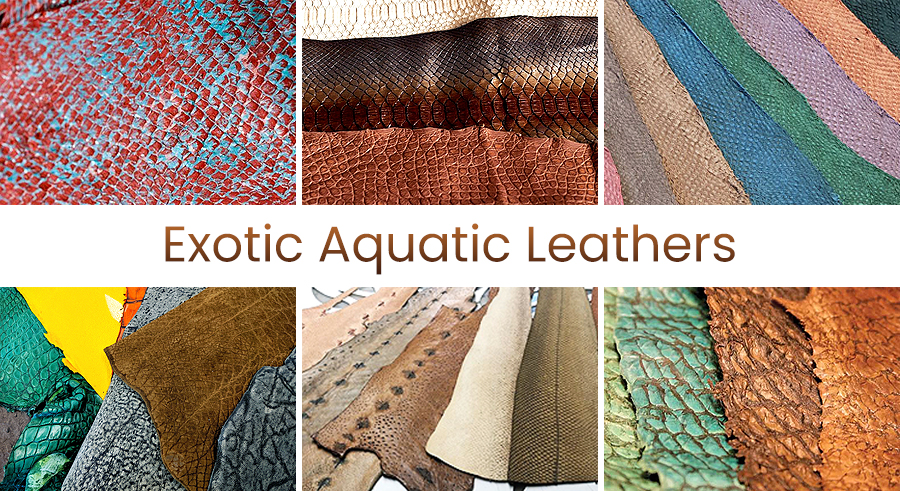Fashion evolves fast. And now, the fashion-forward crowd has found ways to diversify and make the most out of the best available exotic aquatic leathers. Hagfish, Mahi-mahi, Arapaima, Stingray, Eel fish and others are commonly used for exotic leathers.

Wherever available, various fish species are used for procuring leather. However, aquatic leathers are no replacement to the age-old conventional bovine leather in terms of quality, durability, and variety of use. Aquatic leathers are now a days used sparingly for manufacture of fashion handbags and accessories and also used in the garment industry.
Aquatic leathers are easily recognizable due to their unique pattern. Such leathers have a pin-striped pattern on their skin. They are thin, yet strong because of the crossway fibre structure. Aquatic leathers are also easily dyeable and can replicate various colours.
However, the governments world-wide are responding to the calls to conserve exotic species and regulate the manufacture and sale of exotic, including aquatic leather products. According to the IUCN, each year, approximately 300,000 reticulated pythons are harvested from the wild in Indonesia and Malaysia to supply skins for the international trade in exotic leathers. In 2020, the USA state of California enacted legislation to ban the sale of many exotic leathers and leather products, including alligators and crocodiles. The bans went into effect on January 1, 2020 (alligators and crocodiles) and into effect on January 1, 2022, for caiman and lizards.
At Walletsplus, we abide by the law of the land and international guidelines, like SMETA and do not promote commercial use of skins of endangered species.



